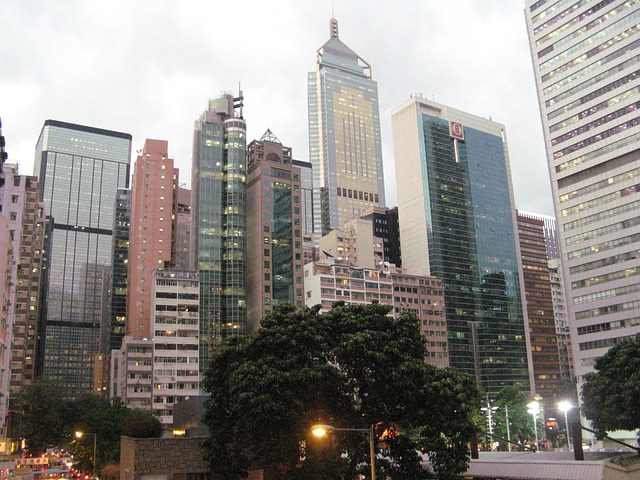Commercial property insurance is a crucial form of coverage that provides protection for businesses against property-related risks. It is specifically designed to safeguard the physical assets and properties that play a vital role in the operations and success of a business. From buildings and equipment to inventory and furniture, commercial property insurance helps mitigate the financial impact of damage or loss caused by events such as fires, natural disasters, theft, vandalism, and other covered perils.
As a business owner, your commercial property represents a significant investment and is often the cornerstone of your operations. Therefore, it is essential to understand the importance of commercial property insurance and the valuable protection it provides. This insurance coverage not only helps repair or replace damaged property but also assists in covering the associated costs, allowing businesses to recover and continue their operations without significant financial strain.
In this guide on commercial property insurance, we will delve into the key aspects of this coverage, including its benefits, types of property covered, factors affecting premiums, and tips for selecting the right policy. Whether you own a small retail store, a manufacturing facility, or an office space, understanding the fundamentals of commercial property insurance is essential for safeguarding your business against unexpected property-related risks.
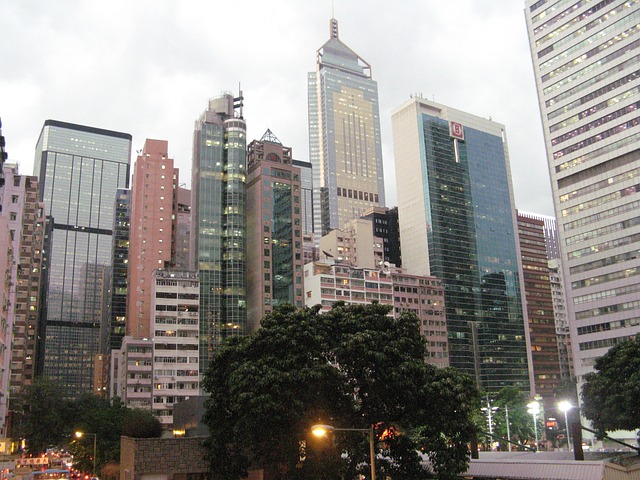
By exploring the details of commercial property insurance, you will gain insights into how this coverage works, the risks it protects against, and the steps you can take to ensure your property is adequately insured. So, let’s delve into the world of commercial property insurance and discover the peace of mind and the financial security it can bring to your business.
Coverage for Physical Property
Commercial property insurance provides coverage for a wide range of physical assets that are essential to the operations of a business. This includes buildings, office spaces, warehouses, manufacturing facilities, equipment, inventory, furniture, and other tangible property. The insurance policy typically covers these assets against a variety of risks, such as fire, theft, vandalism, storm damage, water damage, and certain natural disasters. It is important for business owners to carefully assess their property assets and ensure that they are adequately covered by the insurance policy. This involves evaluating the value of the property and determining the appropriate coverage amount to ensure that any potential damage or loss can be sufficiently compensated.
One key aspect of coverage for physical property is the distinction between real property and personal property. Real property refers to buildings and structures that are permanently attached to the land, while personal property encompasses movable assets such as equipment, inventory, and furniture. Commercial property insurance typically covers both types of property, but it is important to review the policy terms and conditions to understand the extent of coverage provided for each category. Additionally, business owners should consider any specialized or unique assets they have, such as specialized machinery or technology, and discuss with the insurance provider to ensure proper coverage for these specific items.
It is worth noting that commercial property insurance may also offer coverage for properties located off-premises. This can include equipment or inventory that is temporarily stored at a different location or transported during business operations. Off-premises coverage provides protection against risks such as theft, damage, or loss during transit or while stored in a separate location. Understanding the scope of coverage for off-premises property is crucial, especially for businesses that frequently transport goods or have equipment located at different sites.
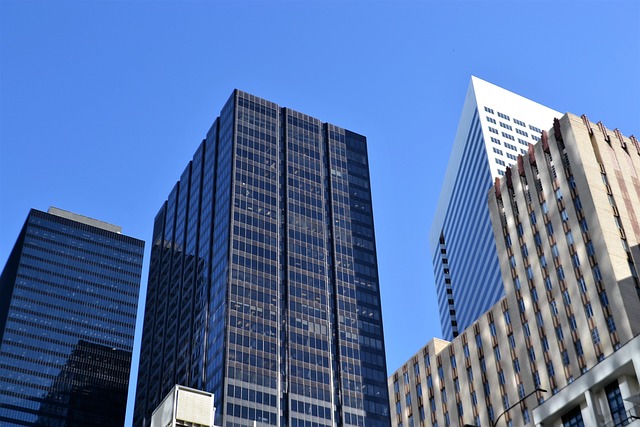
Overall, coverage for physical property under commercial property insurance is designed to protect businesses from the financial burden of repairing or replacing damaged or lost assets. It provides peace of mind and ensures that businesses can recover quickly and resume operations in the event of property-related incidents. By having comprehensive coverage for physical property, business owners can focus on their core activities, knowing that their valuable assets are adequately protected against a wide range of risks.
Perils and Risks
Commercial property insurance is designed to protect businesses from a variety of perils and risks that can result in damage or loss of their physical assets. Understanding the specific perils covered by the insurance policy is crucial for business owners to ensure they have appropriate coverage in place. While the exact perils covered may vary depending on the insurance provider and policy, there are several common risks that are typically included.
One of the most common perils covered by commercial property insurance is fire. Fires can occur due to electrical faults, human error, natural disasters, or other unforeseen circumstances. The policy provides coverage for damages caused by fire, including the cost of repairing or rebuilding the property, replacing damaged assets, and any associated expenses such as temporary relocation or business interruption.
Another significant risk covered by commercial property insurance is theft and burglary. This includes theft of valuable assets, equipment, inventory, and other property due to break-ins or acts of vandalism. The insurance policy provides compensation for the stolen items and helps businesses recover financially from the losses incurred.
Natural disasters such as storms, hurricanes, earthquakes, and floods can cause significant damage to commercial properties. Commercial property insurance often includes coverage for these perils, protecting businesses from the devastating financial impact of natural disasters. It covers the cost of repairing or rebuilding the damaged property, replacing equipment and inventory, and assisting with additional expenses incurred during the recovery period.
Water damage is another common risk covered by commercial property insurance. This includes damages caused by burst pipes, leaking roofs, or other plumbing issues. Water damage can lead to structural damage, mold growth, and destruction of valuable assets. The insurance policy helps businesses cover the cost of repairs, remediation, and asset replacement resulting from water-related incidents.
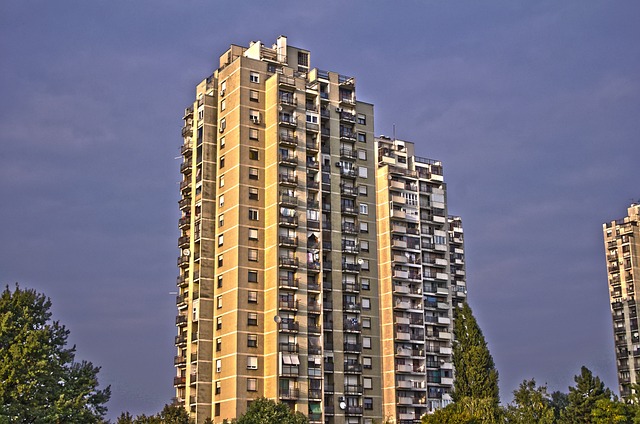
Other perils that are often covered include vandalism, riots, civil commotion, explosions, and damage caused by accidents such as vehicle collisions. It is important for business owners to carefully review the policy terms and conditions to understand the specific perils covered and any exclusions or limitations that may apply. By having comprehensive coverage for a wide range of perils, businesses can mitigate the financial risks associated with property damage or loss and ensure their continuity in the face of unforeseen events.
Policy Options and Coverage Limits
When it comes to commercial property insurance, there are various policy options and coverage limits available for businesses to choose from. It is important for business owners to carefully evaluate their needs and assess the value of their property to determine the most appropriate coverage options and limits.
One of the primary considerations is the type of policy to select. There are typically two main types of commercial property insurance policies: named perils and all-risk. Named perils policies provide coverage only for specific perils explicitly listed in the policy. On the other hand, all-risk policies offer broader coverage and protect against a wide range of perils unless they are explicitly excluded from the policy. All-risk policies tend to be more comprehensive and offer greater protection, but they may come with slightly higher premiums compared to named perils policies. Business owners should carefully consider their risk tolerance and the specific risks they want to be covered against when choosing between these policy types.
In addition to policy types, business owners must also consider the coverage limits for their commercial property insurance. Coverage limits refer to the maximum amount the insurance provider will pay out in the event of a covered loss. It is crucial to determine appropriate coverage limits that accurately reflect the value of the property and assets being insured. Underinsuring can leave businesses vulnerable to financial strain if a significant loss occurs while overinsuring can lead to unnecessary expenses. An accurate assessment of property value, including buildings, equipment, inventory, and other assets, will help determine the appropriate coverage limits. Working with a knowledgeable insurance agent or broker can provide valuable guidance in setting suitable coverage limits based on the specific needs of the business.
Business owners should also consider additional coverage options that may be available as part of their commercial property insurance policy. These can include coverage for business interruption, which compensates for lost income and additional expenses incurred during a period of interrupted operations due to a covered event. Other options may include coverage for specific types of equipment, valuable documents, or outdoor signage. It is important to review these options and assess their relevance and value to the business’s specific circumstances.
Ultimately, selecting the right policy options and coverage limits is essential for ensuring that businesses have adequate protection against property-related risks. By carefully assessing their needs, understanding the available options, and seeking professional advice, business owners can tailor their commercial property insurance policy to best suit their requirements and mitigate the financial impact of property damage or loss.
Factors Affecting Premiums
When obtaining commercial property insurance, there are several factors that can influence the premiums businesses will need to pay for their coverage. It is important for business owners to understand these factors and how they can impact the cost of their insurance premiums.
The geographic area where the property is situated plays a significant role in determining the risk level associated with potential perils. For example, businesses located in areas prone to natural disasters such as hurricanes or earthquakes may face higher premiums due to the increased likelihood of property damage. Similarly, businesses located in high-crime areas may have higher premiums due to the increased risk of theft or vandalism. Insurance providers assess the risk associated with the location and adjust premiums accordingly.
The type of property being insured is another key factor. Certain property types, such as buildings with outdated electrical or plumbing systems, may be considered higher risk and result in higher premiums. Properties with specific hazards, such as those housing flammable materials or operating heavy machinery, may also face higher premiums due to the increased risk of accidents or incidents. Insurance providers evaluate the characteristics of the property and assess the associated risks to determine appropriate premiums.
The value of the property and the coverage limits chosen also affect the insurance premiums. Higher-valued properties and higher coverage limits typically result in higher premiums since the potential loss that the insurance company would have to cover is greater. Business owners should carefully evaluate the value of their property and strike a balance between adequate coverage and affordability.
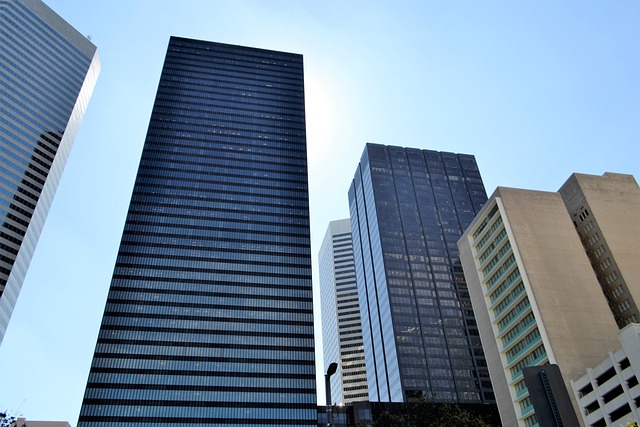
Additionally, the deductible amount selected by the business owner can impact premiums. The deductible is the amount that the insured must pay out-of-pocket before the insurance coverage comes into effect. Higher deductibles generally result in lower premiums, as the business owner assumes more financial responsibility in the event of a claim. It is important to carefully consider the deductible amount, balancing the desire for lower premiums with the ability to afford the deductible in case of a loss.
Lastly, the claims history of the business can influence insurance premiums. If a business has a history of frequent claims or significant losses, insurance providers may view them as a higher risk and adjust premiums accordingly. Conversely, businesses with a clean claims history may benefit from lower premiums.
Understanding these factors and how they impact premiums is crucial for business owners when obtaining commercial property insurance. By evaluating these factors and working with an experienced insurance agent or broker, businesses can make informed decisions to secure the right coverage at the most reasonable premiums available.
Business Interruption Coverage
Business interruption coverage is a crucial component of commercial property insurance that provides financial protection to businesses in the event of a temporary shutdown or interruption of operations due to a covered peril. It helps mitigate the financial consequences of income loss and additional expenses that arise from the disruption.
When a business is forced to suspend operations due to property damage or loss, it can experience a significant impact on its revenue stream. During the downtime, there may be ongoing fixed expenses, such as rent, utilities, salaries, and loan payments, that continue to accrue even when the business is not generating income. Business interruption coverage helps bridge the gap by providing compensation for the net income the business would have earned had the interruption not occurred. This ensures that businesses can maintain financial stability during the recovery period and meet their ongoing financial obligations.
In addition to lost income, business interruption coverage can also cover additional expenses that businesses incur as a result of the interruption. These expenses may include costs associated with temporary relocation to a different location, renting equipment to resume operations, or advertising and marketing efforts to regain customer confidence and attract business. By reimbursing these extra expenses, business interruption coverage enables businesses to recover and resume operations more efficiently.

The coverage period for business interruption insurance is typically tied to the time it takes for the business to restore its operations to pre-interruption levels. This period is known as the “indemnity period.” It is crucial for business owners to carefully assess and determine the appropriate indemnity period based on the potential time it may take to rebuild, repair, or replace damaged property and equipment, as well as the time required to reestablish customer relationships and regain market share.
How to Choose the Right Commercial Insurance Policy for Your Business
It’s important to note that business interruption coverage is typically triggered by a covered peril under the commercial property insurance policy. Common perils that may trigger business interruption coverage include fire, water damage, storms, vandalism, or other events explicitly mentioned in the policy. Business owners should review the policy terms and conditions carefully to understand the covered perils and any exclusions or limitations that may apply.
Having business interruption coverage is essential for businesses of all sizes. It provides a safety net during times of uncertainty and ensures the continuity of operations in the face of unforeseen events. By securing this coverage, businesses can have peace of mind knowing that their financial stability and ability to recover from interruptions are protected.
Tips for Choosing the Right Policy
Selecting the right commercial insurance policy is a critical decision that requires careful consideration. Here are some valuable tips to help business owners choose the most suitable policy for their specific needs:
- Assess Your Risks: Begin by thoroughly assessing the risks that your business faces. Consider potential hazards, such as natural disasters, theft, liability claims, or industry-specific risks. Understanding your unique risk profile will help you identify the types of coverage you need.
- Consult with an Insurance Professional: Seek guidance from an experienced insurance professional or broker who specializes in commercial insurance. They can provide expert advice tailored to your business’s needs, help you understand policy options, and guide you through the selection process.
- Compare Multiple Quotes: Obtain quotes from multiple insurance providers to ensure you get the best coverage at the most competitive rates. Don’t solely focus on the cost; consider the coverage limits, deductibles, and policy terms offered by each provider.
- Evaluate the Financial Stability of Insurers: Consider the financial strength and stability of insurance companies. Look for reputable insurers with a strong track record of paying claims promptly and efficiently. Independent rating agencies, such as A.M. Best, provide financial strength ratings for insurance companies that can help you assess their stability.
- Review Policy Terms and Exclusions: Carefully review the terms, conditions, and exclusions of each policy. Pay attention to specific coverage limitations, exclusions, and any additional endorsements or riders that may be available to tailor the policy to your business’s needs.
- Consider Additional Coverages: Beyond the basic coverage, consider additional coverages that may be relevant to your business. This could include specialized endorsements like cyber liability insurance, professional liability insurance, or inland marine insurance. Evaluate these options based on the unique risks your business faces.
- Understand Policy Limits and Deductibles: Ensure that the coverage limits and deductibles offered align with your business’s risk tolerance and financial capabilities. Set appropriate limits to adequately protect your assets and liabilities without overextending your budget.
- Review the Claims Process: Understand the claims process and the level of support provided by the insurance company in the event of a claim. Prompt and efficient claims handling is crucial to minimize disruptions to your business operations.
- Regularly Review and Update Coverage: As your business evolves, regularly review your insurance coverage to ensure it remains adequate. Changes in operations, new assets, or expanded services may require adjustments to your policy to maintain appropriate coverage.
- Seek Recommendations and Read Reviews: Seek recommendations from other business owners in your industry or professional network who have experience with commercial insurance. Additionally, read reviews and testimonials about insurance providers to gauge their reputation and customer satisfaction.

By following these tips and taking a diligent approach to selecting the right commercial insurance policy, business owners can protect their assets, mitigate risks, and ensure the long-term stability and success of their businesses.
Conclusion
In conclusion, commercial property insurance plays a vital role in safeguarding businesses against potential financial losses resulting from property damage or loss. This comprehensive coverage provides protection for physical assets, such as buildings, equipment, inventory, and furniture, ensuring that businesses can recover and resume operations in the event of unforeseen perils.
With commercial property insurance, businesses can have peace of mind knowing that they are financially protected against a wide range of risks, including fire, theft, vandalism, natural disasters, and other covered perils. This coverage not only helps businesses repair or replace damaged property but also provides coverage for business interruption, additional expenses, and liability risks.
When considering commercial property insurance, it is crucial for business owners to carefully assess their coverage needs, evaluate the risks specific to their industry and location, and determine appropriate coverage limits. They should also review policy terms, exclusions, deductibles, and endorsements to ensure they have the right level of protection.
